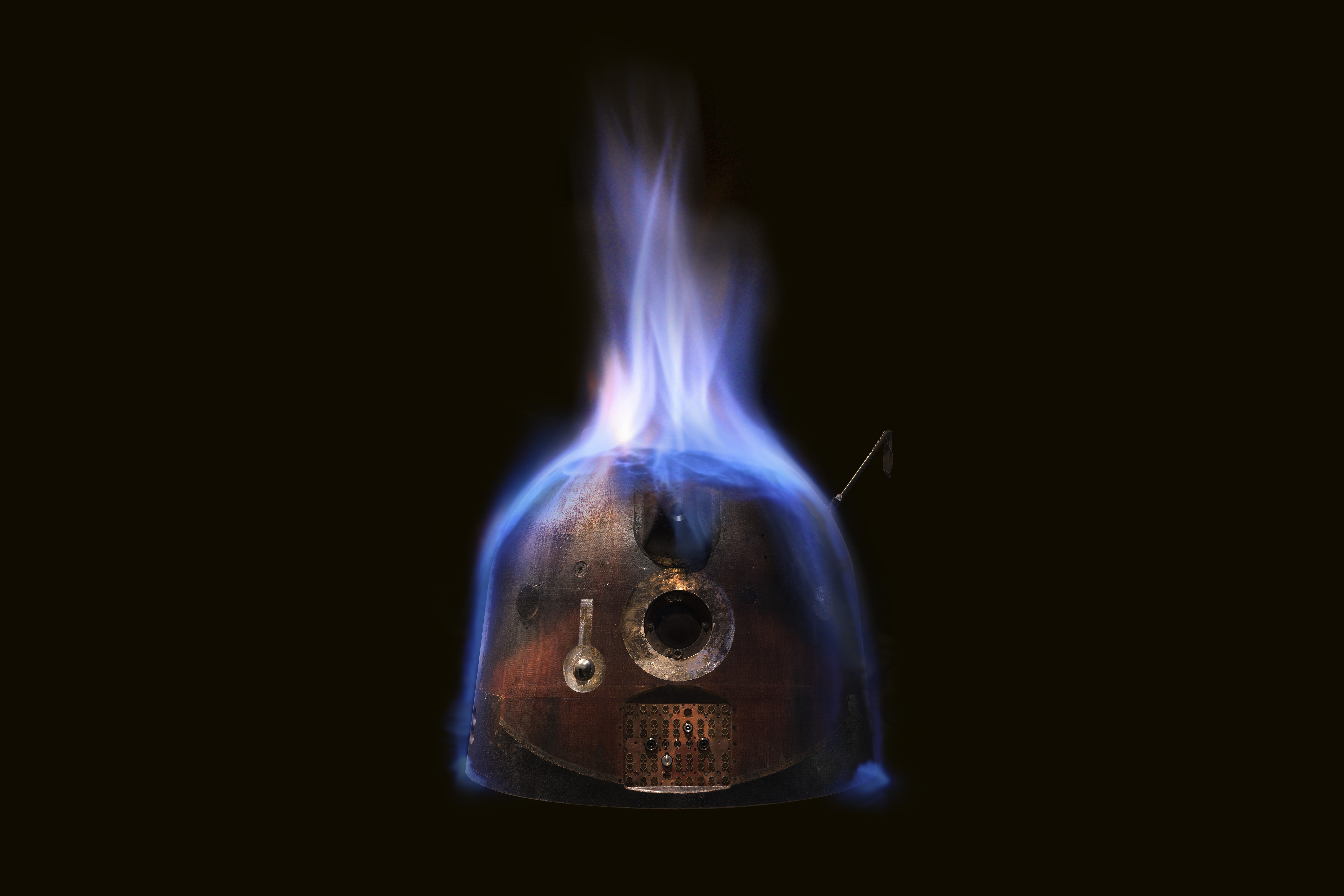This coming Christmas, millions of presents will be delivered to children around the world as reliably as Rudolph’s nose is red. And yet, even though this extraordinary global feat has continued unabated for decades, there are still some who doubt the existence of Father Christmas.
There are those who, like the evolutionary biologist Richard Dawkins, carp about the lack of sonic booms, as Santa flits at high speed from chimney to chimney to deliver all those presents.
Others have conducted crude calculations to suggest that, as result of Santa’s sleigh heating in just the same way as Tim Peake’s spacecraft did as it returned to Earth, our jolly fat friend would be incinerated during his high speed travels on Christmas Eve.
However, do stop to think about this existential issue for one moment. If you accept these doubts, then that is tantamount to accepting the existence of an extraordinary worldwide cover-up to maintain the fiction of Santa Claus, involving doting parents, news agencies, TV programmes and more.
We have discussed the rise of the ‘post-truth era’ in the Science Museum and what it means for science but, even so, this seems a global conspiracy theory too far: the idea that dads around the world are about to unpack a fake beard and red coat to delight their children is utterly preposterous.
Here is all the evidence that you need to challenge ten supposedly common-sense reasons cited for the non-existence of Santa:
1. How can Santa possibly visit 1.9 billion or so children worldwide in a single evening?
The latest research suggests there are several ways to achieve this seasonal feat: Larry Silverberg at North Carolina State University has long pondered such issues and suggests that Santa Claus exploits features of the theory of relativity, such as that a clock in his moving sleigh will tick more slowly relative to clocks in homes he has to visit.
Some have speculated he may use a warp drive sleigh (it’s really not so far-fetched – see this Alcubierre warp drive, named after Miguel Alcubierre).
Or Santa may, with the help of exotic materials, create space-time short cuts called “wormholes”, as conceived by Kip Thorne of Caltech. The wormhole idea not only allows Santa to shift from chimney to chimney but to carry out temporal hops too, providing all the time in the world to deliver those presents.
Others have also suggested Santa resorts to quantum teleportation, like something out of Star Trek, though it is trickier to do than many realise.
2.Why don’t we hear those sonic booms caused by Santa’s sleigh?
They are certainly an issue: to deliver all those presents, a back-of-the-envelope calculation suggests that Santa must travel at an average of 1,279 miles per second, achieving speeds of around 6.395 times the speed of sound, or Mach 6,395.
Even so, there is plenty of research on how to reduce sonic booms, see here from NASA for example. Or perhaps Santa can remove them. He simply cancels the peaks and troughs in the shock wave with troughs and peaks of ‘anti-sound’ generated by a device. His sleigh generates a noise to accompany the sonic boom, such that a peak in the boom is matched by a trough in the emitted noise, and vice versa. The result is a silent night.
3.How come there are not more Santa sightings?
Although scientists are struggling to catch up with Santa’s advanced R&D research effort, they too have started to develop simple invisibility cloaks based on exotic materials known as metamaterials. Indeed, various invisibility schemes have been around for more than a decade.
4. How can Santa lug vast numbers of presents around the world?
Santa would simply take the digital instructions for manufacturing all the children’s individual gifts on-site, using nanomachines that grow them, atom by atom, from soot, snow and other chemicals collected along the way (not that far-fetched, given advances in 3D printing).
Large toys would require thousands of nanomachines working in concert—and would therefore drain Santa’s technological resources. That is why children should not expect more than one big gift each Christmas.
5. Isn’t it simply illogical for Santa to exist?
With Thomas Oléron Evans, Hannah Fry of University College London opens her book, The Indisputable Existence of Santa Claus, with not one but three mathematical proofs for the existence of Santa Claus.
Taking existing knowledge and building new truths using bricks of pure logic is what makes mathematics so powerful, she argues (so long as your great logical edifice rests on sturdy assumptions, of course.) ‘Deep down, we all know the truth, don’t we?’
6. Surely Santa is getting too ancient to deal with the hassle of global travel?
With evidence that gene therapy now works, for instance to treat the blood clotting disorder haemophilia, the power of gene editing, and the rise of stem cell science, it’s no surprise that Santa can use cellular alchemy to shrug off the effects of old age, and the incredible stress of a delivery schedule that makes the efforts of Amazon look antediluvian.
7. What other evidence can you muster for Santa’s seasonal feat?
 For a start, Rudoph’s nose, an important clue that there has been friction heating consistent with the demands of high-speed present delivery.
For a start, Rudoph’s nose, an important clue that there has been friction heating consistent with the demands of high-speed present delivery.
This would rule out competing scientific theories. For example, leaving aside the fact that Santa’s reindeer are probably female (by the time Christmas arrives, the only adult reindeer with antlers, and enough energy to drag around a sleigh full of presents, are likely to be female) some have suggested the redness is sunburn, owing to how the inspiration for Santa seems to be St. Nicholas, born around A.D. 270 in the town of Patara in what is now Turkey.
Another popular competing theory was outlined in the journal Parasitology Today by Odd Halvorsen of the University of Oslo who pointed out that Rudolph’s warm, humid respiratory system provides a cosy home to many parasites (our neighbours blame fly larvae, or ‘snot bots’). Hence, Rudolph’s celebrated discoloration is the result of parasitic infection.
8. You go on about Santa but isn’t it the case we don’t really have a clue what Santa looks like?
 We do know what he looks like, thanks to bones that have long been venerated as relics of St Nicholas, the original Santa.
We do know what he looks like, thanks to bones that have long been venerated as relics of St Nicholas, the original Santa.
Scientists have found that they do in fact date from the right historical period. Radiocarbon dating results pinpoint the relic’s age to the fourth century AD – the time that some historians suggest that St Nicholas died (around 343 AD).
The remains of have laid in the Basilica di San Nicola, Bari, Southern Puglia, since 1087, where they are buried in a crypt beneath a marble alter. They were exhumed in 1953 following restoration work and, half a century later, Caroline Wilkinson of Manchester University, used X-rays and measurements of the remains to model the saint’s head.
A trimmed, white beard was added after studies of Orthodox icons revealed that to be the contemporary fashion (though today it could be causing an image problem for Santa).
The resulting computer-generated image is a world away from the chubby, rosy-cheeked, blue-eyed jolly fellow, however. He was a short, tough-looking man aged around 60, with a masculine square face and a broken nose: you could see him being a bouncer at the Boxing Day sales.
9. How does Santa know where children live, and what gifts they really want?
There is a technique called Magnetoencephalography which uses a SQUID (a Superconducting Quantum Interference Device) to detect minute magnetic fields generated by the crackle of brain activity.
Sophisticated signal processing methods could then be used by Santa to filter the data and ascertain by this form of ‘mind reading’ who the children are, where they live, whether they’ve been nice or naughty (though this is a matter of scholarly debate) and what they want.
10. No serious organisation is going to take Santa seriously, surely?
One sign that Santa is real is that his progress around the world is diligently followed each year by none other than the North American Aerospace Defense Command, which was set up to track Soviet ICBM missiles.
Today it deals with the monitoring of man-made objects in space, warnings of attack against North America by space vehicles, and that sort of thing. When Christmas Day approaches, you can use this Norad website to check out how Santa is doing.

Given all the above, one can only conclude that somewhere under the North Pole (all this talk of Santa living on snowy moons does seem a tad far-fetched) there is an army of scientist-elves experimenting with high tech materials, quantum computers, and warped geometries of time and space, all united by one single, generous purpose: to help Santa make millions of children happy each Christmas.
Roger Highfield is the author of Can Reindeer Fly? The Science of Christmas (in America, The Physics of Christmas)

